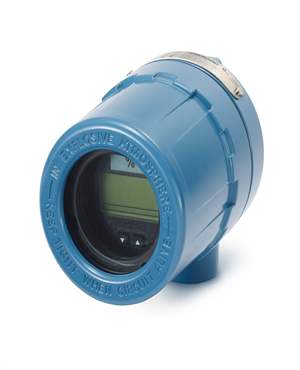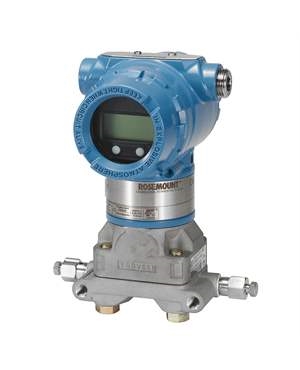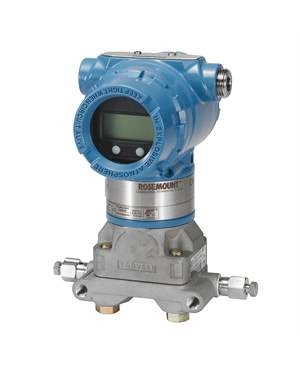Tips to Augment the Performance and Service Life of Pressure Transmitter
Brian Craig
November 01, 2018
Nowadays, pressure sensors are technologically advanced and designed to offer reliable performance than earlier ones. Most of these pressure transmitters are designed for long-term performance even in harsh environments of industrial, automotive, aerospace, gas turbine, oil processing, nuclear plant, and power station applications. Although they are built ruggedly using time-tested components, they are also prone to failure or sudden breakage at any time during their service life. However, being a critical instrument in every process monitoring and controlling applications, a sudden failure is not at all acceptable, as it leads to several hitches and consequences. However, by following a few tips, users can enhance the longevity/performance of pressure sensor to avoid unforeseen breakdown. This is what exactly covered in this post.

Things to be noted to Augment the Performance of a Pressure Transmitter
Prevent unexpected failures and thus avoid costly replacement by abiding by the following tips.
- Being one of the most fragile parts of the pressure transmitter, it is crucial to give additional care to the sensor diaphragm. Inspect the diaphragm on a regular basis, and ensure that it is in a good condition to withstand forces.
- It is important to select these pressure-sensing devices after considering the application areas. To ensure the expected performance and longevity, the user must evaluate the following before the device is installed or monitoring purposes.
- Operational temperature ranges
- Chemicals and corrosive gasses compatibility
- Humidity or wet environment
- Always act in par with the manufacturer’s instructions when wiring and grounding the pressure transmitter. This helps to prevent electromagnetic interference (EMI), which is a disturbance generated by an external source, that diminishes the performance of the sensor.
- The price of the pressure sensors increases with the increase in the accuracy level. Hence, to get the expected performance, it is crucial to select the right model considering the level of accuracy required for the application.
- It is important to fit the sensor in a pressure port it is designed for. Taking care of this is extremely important to augment the life and performance of your pressure transducer.
- Ensure to provide added protection to sensor housing and cable if they are intended for applications near:
- Wash down area
- Electrically noisy area
- Always opt pressure transmitters that are built confirming to specific approvals, or certifications. For example, pressure sensing devices meant for applications in petrochemical and oil and gas industries must be in compliance to hazardous location approvals.
- Being a critical instrument for your process applications, you cannot afford buying a low quality pressure sensitive device that may give you inaccurate reading or may explode during the operation. To avoid such unforeseen situations and to get expected performance, it is important to procure the product from leading brands.
It would be too annoying to work with a pressure sensing device that fails to perform to the expected level, but gives troubles often. However, if you consider simple things as listed above right from the beginning, several performance problems can be avoided. When this fundamental knowledge is combined with the right selection of pressure transmitter from leading suppliers, working with pressure sensors will be easier than ever before! Searching for such a distributor, who offer the best brands at discount pricing with excellent technical assistance? The Transmitter Shop is one such reliable distributor of ready-to-ship transmitters and accessories.
Related Posts
- What are the Steps Involved in Calibrating Pressure Gauge?
- All Important Questions on Reconditioned Transmitters Answered
- Is Remanufactured Transmitter a Better Option than a New One?
- Differential Pressure Transmitters: How Do They Help in Flow Measurements?
- 3 Whats that Explain How Often You Should Calibrate Pressure Transducer
- Guidelines for Troubleshooting Pressure Transducers
- Learn How to Calibrate a Pressure Transmitter – II
- Learn How to Calibrate a Pressure Transmitter
- Know Three Interesting Uses of Pressure Transmitters
- Things to Check before Buying a New Pressure Transmitter
- A Look at Various Types of Industrial Transmitters – Part II
- A Look at Various Types of Industrial Transmitters Part I
- All Questions on Smart Transmitters and their Calibration Answered
- 3 Major Pressure Transmitter Technologies That Made the Device Popular
- An Unconventional Guide to Selecting the Right Pressure Sensor
- Factors To Be Considered While Differentiating $40 and $400 Pressure Transmitters
- Tips to Augment the Performance and Service Life of Pressure Transmitter
- Factors of Consideration When Choosing Pressure Transmitters
- 5 Most Popular Pressure Transmitter Technologies
- Tips to Improve the Performance of Pressure Sensors
- Factors to Consider When Choosing a Pressure Transmitter Manifold
- Safety Tips for Differential Pressure Transmitter Operation
- Impact of Shock and Vibration on Pressure Transducer
- Rosemount 3051S vs 3051C Transmitter – What is Your Choice?
- Rosemount 2088 Vs Rosemount 3051 – A Few Points of Differences Discussed
- Difference in Conventional Transmitters and Smart Transmitters
- How to Choose Diaphragm Seals for Your Application?
- How to Select Pressure Transmitter for Your Application?
- Remote Seals: Significance, Working Principle & Applications
- How Do You Calibrate A Flow Transmitter?
- What is Absolute Pressure Transmitter & how does it work?
- HART Communication Protocol: Overview, Working Principle, Benefits in Industrial Automation
- Absolute and Gauge Pressure Transmitters - Overview and Working Principle
- Flow Meter vs Flow Transmitter: Know the Difference
- How Do You Test for 4 to 20mA Signal in a Pressure Transmitter?
- Multivariable Transmitter: What Is It and How Does It Work?
- Pressure Transmitters vs. Pressure Transducers: Learn the Differential Characteristics
- Procedure to Calculate Accuracy of Pressure Transmitter Discussed
- Testing Pressure Gauges: Processes of Verification Test and Functional Test
- An Ultimate Selection Guide for Flow Transmitters
- The Benefits and Challenges of HVAC System Balancing
- Fluid Flow Isolation Techniques for Pressure Instrumentation
- Understanding Pressure Ranges and Units for Fluid System Monitoring
- Understanding the Impact of Pressure Fluctuations on Drying Performance
- Monitoring and Controlling Energy Production in Power Plants
- Common Challenges in Air Flow Measurement and How to Overcome Them
- Pressure Monitoring in Pump Systems: A Comprehensive Guide
- Exploring Density and Viscosity Measurement in Industrial Processes
- Pneumatic Pressure Controllers: A Safe Choice for Hazardous Areas
- A Practical Guide to Vacuum Measurement and Operation
- 4-20 mA Transmitter Wiring: Understanding 2-Wire, 3-Wire, and 4-Wire Systems
- Flow Measurement Challenges in Subsea Operations
- Flow Measurement Challenges in Subsea Operations
- Pressure Sensing Sensor Modes of Measurement Key Differences and Benefits
- Electromagnetic Flow Sensors for Abrasive and Corrosive Fluids
- Mass Flow Meters and Their Working Principles
- Best Explosion Proof Switches for Hazardous Environments
- Best Explosion Proof Switches for Hazardous Environments
- Furnace Flame Sensor Faults Everything You Need to Know for Safe Operation
- Pneumatic Pressure Controllers: A Safe Choice for Hazardous Areas
- A Practical Guide to Vacuum Measurement and Operation
- Understanding Electrochemical Detection: Principles, Techniques and Environmental Application
QUICK ENQUIRY







